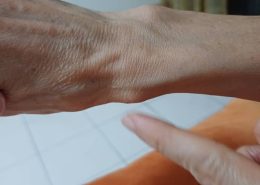My daughter plays volleyball and recently she has been complaining about feeling numbness in her hand. She also said that her fingers feel weak and like they’re tingling. Are these symptoms of carpal tunnel? Should I take her to the ...
I'm sorry to hear about your son's injury. Understanding the difference between a shoulder dislocation and a subluxation is important for managing his recovery and return to sports. Shoulder Subluxation vs. Dislocation - Shoulder Dislocation: This occurs when the head of the humerus (the upper arm bRead more
I’m sorry to hear about your son’s injury. Understanding the difference between a shoulder dislocation and a subluxation is important for managing his recovery and return to sports.
Shoulder Subluxation vs. Dislocation
– Shoulder Dislocation: This occurs when the head of the humerus (the upper arm bone) is completely displaced from the shoulder socket (glenoid). It often requires medical intervention to be repositioned.
– Shoulder Subluxation: This is a partial dislocation where the head of the humerus slips out of the socket but then spontaneously returns to its normal position. It can cause pain and instability but is generally less severe than a full dislocation.
Implications for Football
1. Immediate Care: After a subluxation, it’s crucial to manage pain and inflammation. Rest, ice, compression, and elevation (RICE) are standard initial treatments. Your son may also benefit from non-steroidal anti-inflammatory drugs (NSAIDs) to reduce pain and swelling.
2. Rehabilitation: Rehabilitation is key to recovery and preventing future injuries. A physical therapist can design a program to strengthen the shoulder muscles, improve range of motion, and enhance stability. This often includes exercises to strengthen the rotator cuff and scapular stabilizers.
3. Return to Play: The timeline for returning to football depends on the severity of the subluxation and your son’s response to rehabilitation. Generally, athletes can return to play once they regain full strength, range of motion, and confidence in the shoulder without pain. This can take several weeks to a few months.
4. Preventive Measures: Once he returns to football, preventive measures such as wearing a shoulder brace or taping may be recommended to provide additional support and reduce the risk of re-injury.
How You Can Help
– Encourage Adherence to Rehab: Ensure your son follows his rehabilitation program diligently. Consistency is crucial for recovery and preventing future injuries.
– Monitor for Symptoms: Keep an eye on any signs of persistent pain, instability, or discomfort. If these occur, consult with a healthcare professional for further evaluation.
– Support and Patience: Emotional support is important. Encourage your son to be patient with the recovery process and to not rush back into sports before he is fully ready.
If you have any concerns about his recovery or if he experiences repeated subluxations, it may be beneficial to consult with an orthopedic specialist. They can provide a more detailed assessment and discuss any further interventions if necessary.
See less

Thanks for reaching out on MCA Community Page! The symptoms your daughter is experiencing—numbness in her hand, finger weakness, and tingling—could potentially be related to carpal tunnel syndrome, but there are other possible causes as well. Carpal tunnel syndrome occurs due to compression of the mRead more
Thanks for reaching out on MCA Community Page!
The symptoms your daughter is experiencing—numbness in her hand, finger weakness, and tingling—could potentially be related to carpal tunnel syndrome, but there are other possible causes as well.
Carpal tunnel syndrome occurs due to compression of the median nerve, which supplies sensation and function to the thumb, index, and middle fingers. If her symptoms are primarily affecting these areas, it could point to this condition. However, it’s worth noting that carpal tunnel syndrome is less common in younger individuals and typically affects women over 40. That said, certain factors like repetitive hand movements, prolonged wrist extension, or trauma—such as what might occur during volleyball—can contribute to nerve irritation, even in younger patients like her.
It’s important to have her assessed by a doctor to confirm the diagnosis and rule out other potential causes of her symptoms, such as nerve injuries or overuse strain from her sport. A proper examination will allow for an accurate diagnosis and a proper treatment plan.
In the meantime, encourage her to rest her wrist, avoid repetitive or strenuous wrist movements, and consider using ice to reduce any inflammation. Do get her medical attention immediately if her symptoms worsens.
Dr. Say
Medical Officer.
Disclaimer: The information provided on this forum is for educational purposes only and not intended as medical advice. Please consult a healthcare provider for any medical concerns, diagnosis or treatment.
See less